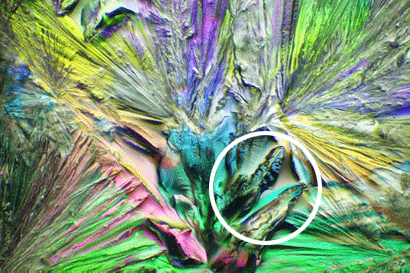My first try with Zerene stereo pair.


Moderators: rjlittlefield, ChrisR, Chris S., Pau


Well, I think that the relief look at the first image is not due to differences in height but to differences in refraction index with the direction (typical of anisotropic crystals) that show under cross polarizers as both interference colors and differences of light intensity (no actual shadows)rjlittlefield wrote: But the stereo pair looks weird to me. There are lots of differences between the two views that appear unrelated to depth. It hurts my head to keep them fused.

The major problem is shift y. For simple stereo pairs you should always use just shift x. Shift y is only for special cases that would be a distraction here. Set shift y = 0% .Sumguy01 wrote:The settings I used for the stereo pairs.
output images = 3
shift x = -3, 3
shift y = -2, 2 ( ?? not for sure about this one)
stack = Dmap